Tastes of Rome food tour sprinkles history on taste buds
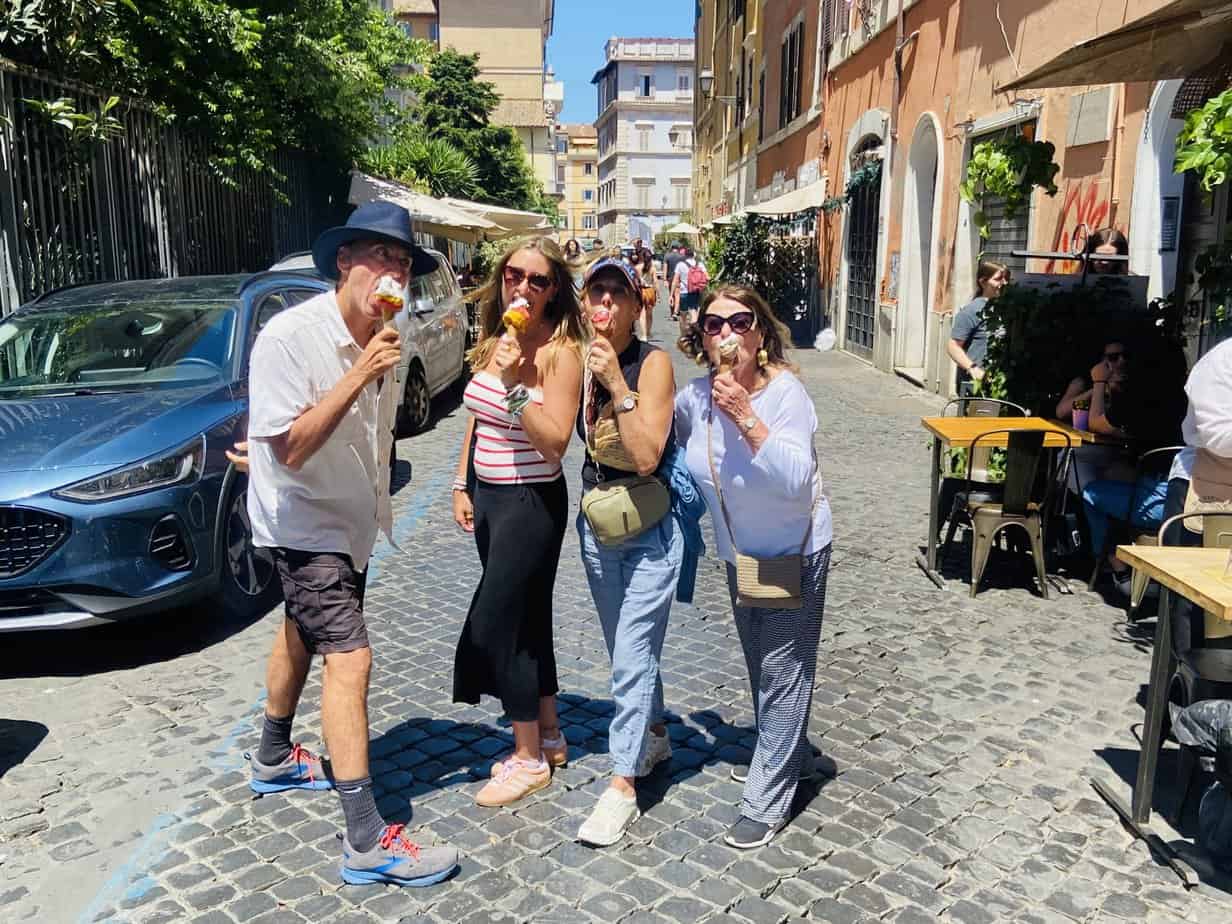
I like a food tour that starts with burning someone at the stake.
No, it hasn’t got that hot here in Rome yet. But it’s close. Saturday it was 97 degrees with 45 percent humidity. Folks, stay away until September. Trust me.
But when you do come, take the food tour that begins with one of the most famous executions in Rome’s long history. In the middle of Campo de’ Fiori, one of Rome’s most popular piazzas, philosopher Giordano Bruno was executed for heresy in 1600.
A statue showing the hooded scholar stands in the middle of the piazza, at the same spot where he went up in flames. On a recent pleasant day before Rome’s scorching summer heat arrived, Tom Leitner and I stood at that same spot.
Leitner is one of my best friends in Rome. He’s a fellow American expat who has carved out a living with his Italian wife Ilaria while teaching English when he’s not doing Frisbee demonstrations around the world. He’s a 12-time world Frisbee champion and recently became inducted in the Freestyle Frisbee Hall of Fame..
His long hair and hippy dippy California vibe belie his knowledge of fine wine, craft beer and Italian history. He also leads a fun, offbeat food tour called The 10 Tastings of Rome. It’s a mix of pasta and paintings, suppli and history. You get fed food and facts, both heavy and trivial.
I met Tom at the Bruno statue along with the Sobers, a grandmother, mother and daughter from Richmond, Virginia. So come along with us and get a true taste of Rome, in more ways than one:
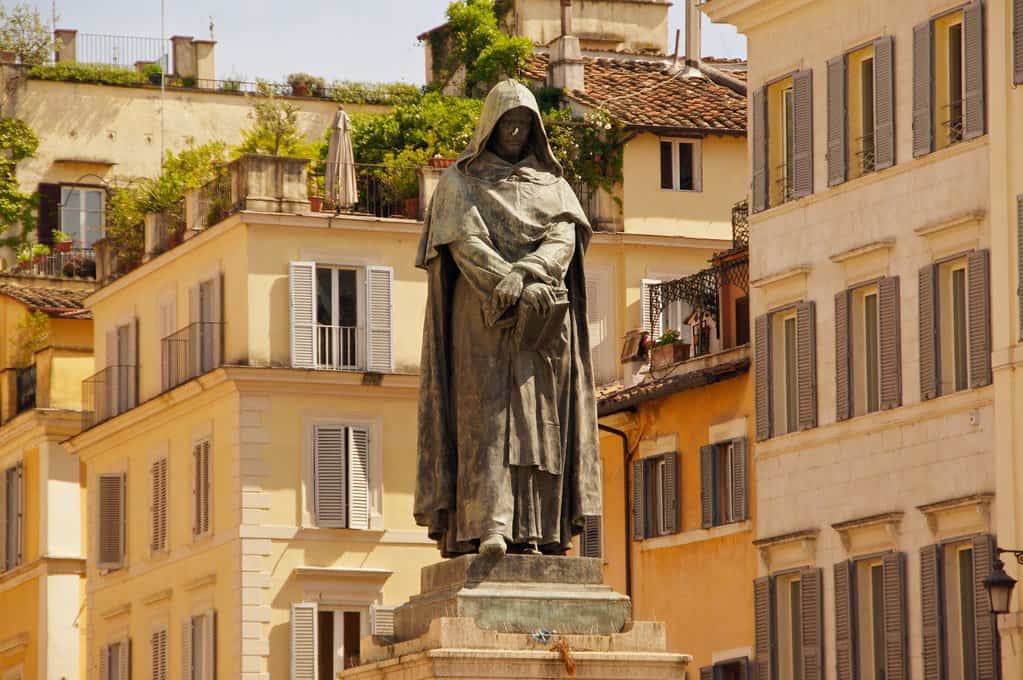
Campo de’ Fiori
The city erected the statue of Bruno 120 years ago. The Catholic Church lit him up for unapologetically denouncing basic Catholic tenets such as eternal damnation and the divinity of Christ. But he also spouted off that distant stars may be suns surrounded by planets which could have life of their own.
Sixteen years after the torched the guy, Rome prosecuted another man who said similar things. His name was Galileo. But why did Galileo leave a legacy in astronomy that will last for eternity and Bruno’s legacy is a mere statue under which Italians canoodle at night?
As Tom explained, “Gaileo said, ‘I could be wrong.’”
We walked across Campo de’ Fiori (Field of Flowers), which was first paved in the 15th century to improve the neighborhood. Today it is one of the city’s most popular public markets, selling everything from fresh vegetables for locals to different flavored limoncello for tourists.
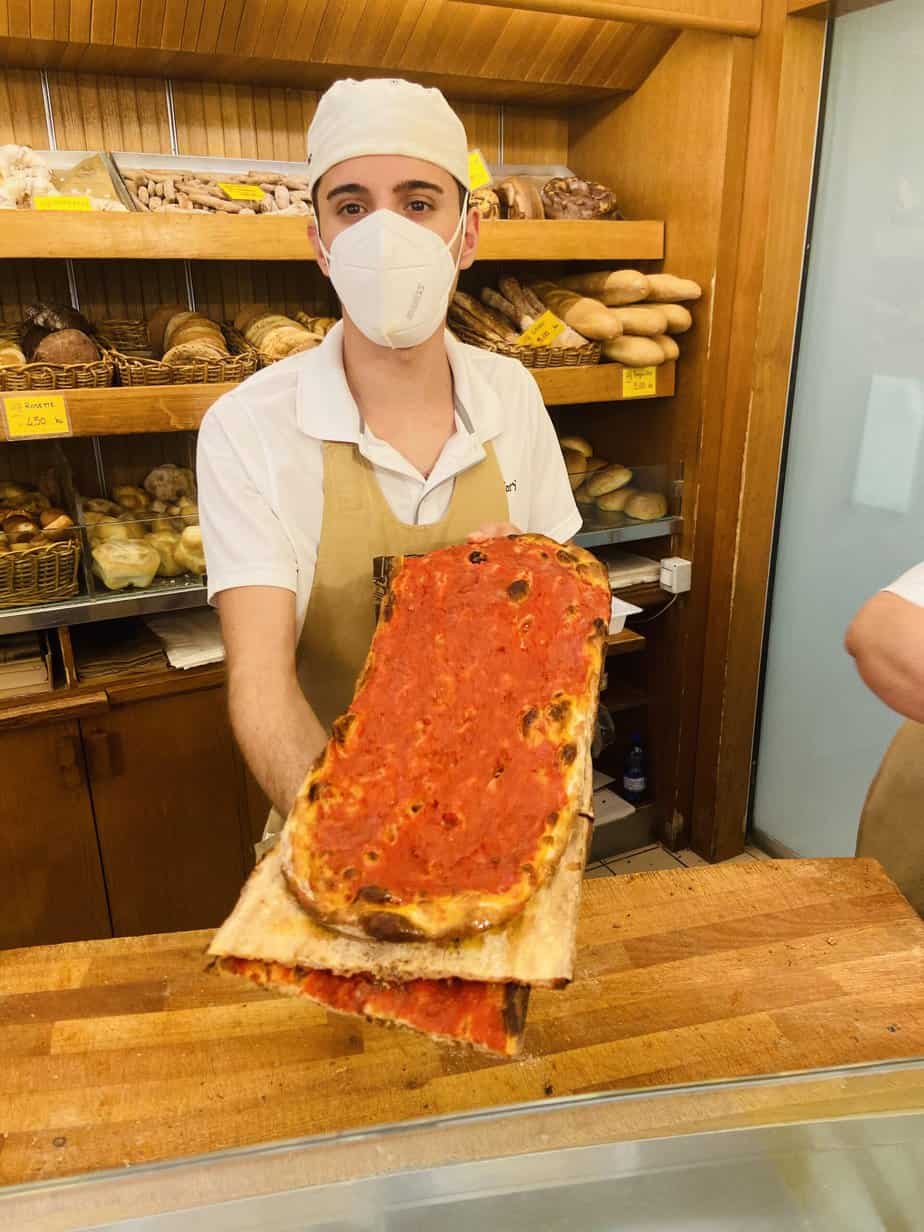
We entered a corner bakery. Forno Campo de’ Fiori has been around since 1850 and when I lived nearby my first two months in Rome in 2014, I often came for an ungherese, a big pretzel-like piece of fried dough covered in white frosting.
When we walked in, we all got some of the most delicious sliced pizza in Rome. They bring out huge slabs of pizza marinara, the simple but delicious thin, Roman-style crust with nothing but tomato sauce, garlic and oregano. It’s perfect in its simplicity as we joined other munchers outside.
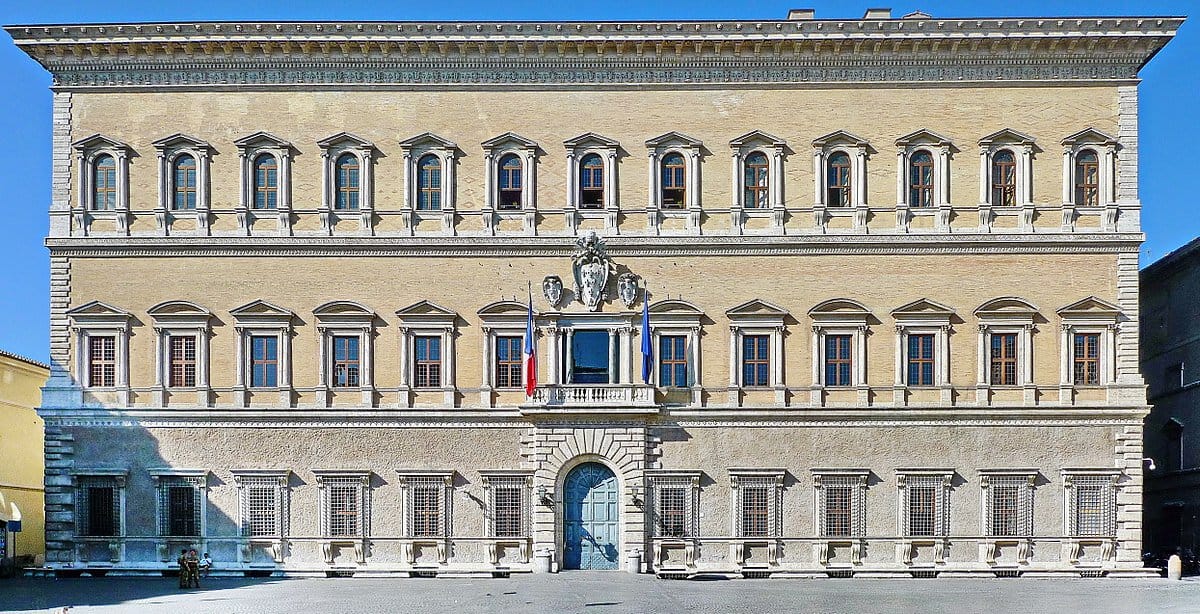
The palaces
We walked down a short street, leaving the chaos of tourists combing Campo for souvenirs and food for the quiet of Piazza Farnese. Home of the spectacular Palazzo Farnese with the French Embassy inside, I was ironically scheduled to tour Palazzo Farnese four days later.
Tom explained that in 1600 it was considered the most beautiful palace in Rome. To this day, it anchors Piazza Farnese like the Taj Mahal anchors the riverside of Agra, the palazzo’s current ugly scaffolding for refurbishing notwithstanding.
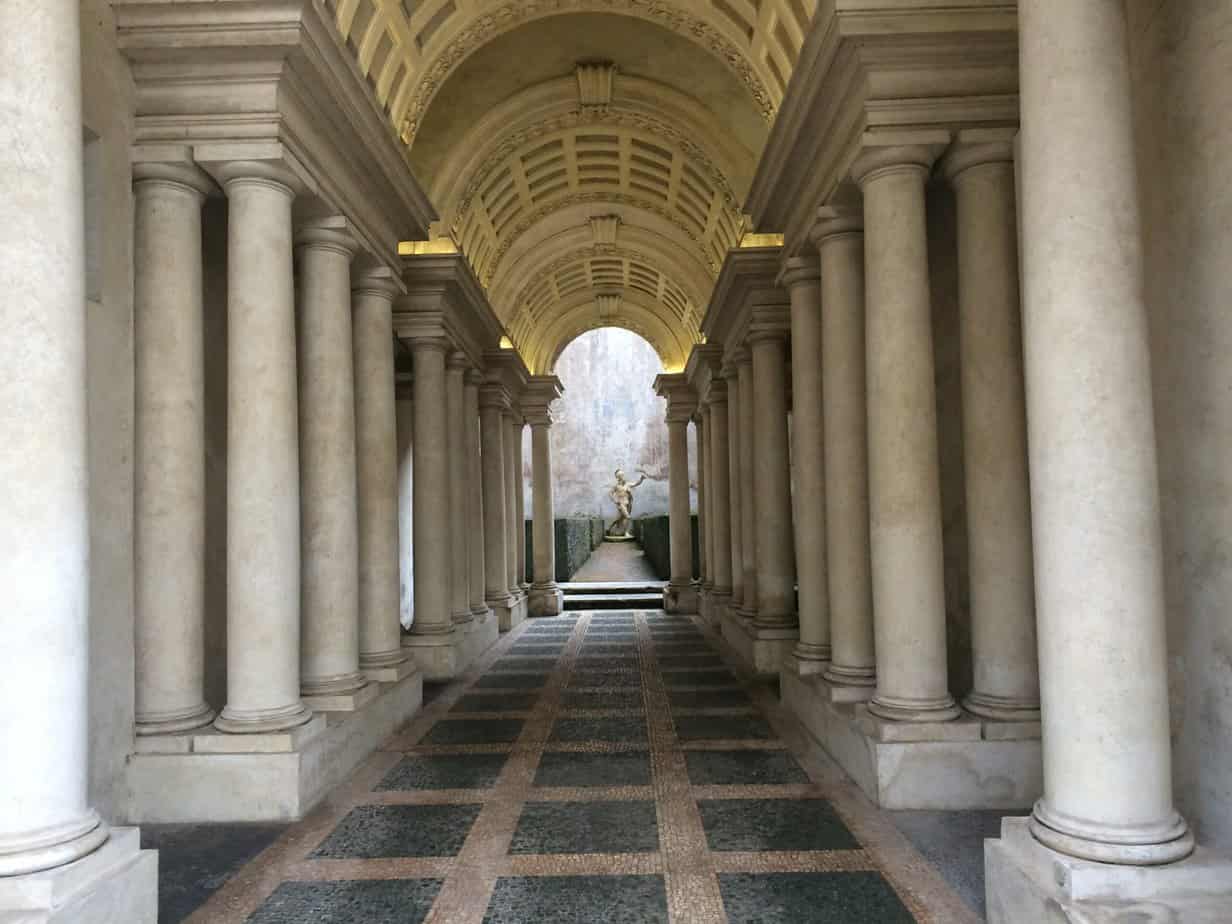
Moving on we entered the Galleria Spada palace. Caravaggio, my art hero, lived here during his star-crossed time in Rome. What it’s best known for is the Borromini Perspective. Tom pointed down a long corridor lined with columns. At the end of the corridor stood a statue of Mars, the Roman god of war.
Tom asked, “How tall do you think the statue is?”
They guessed five feet. Seven feet. Nope.
“It’s 31 inches,” Tom said. He explained how the famous architect Francesco Borromini made the columns narrower as they descended to the end of the corridor. Borromini also slanted the corridor upward. It all created an illusion that the corridor and statue were bigger than they actually are.
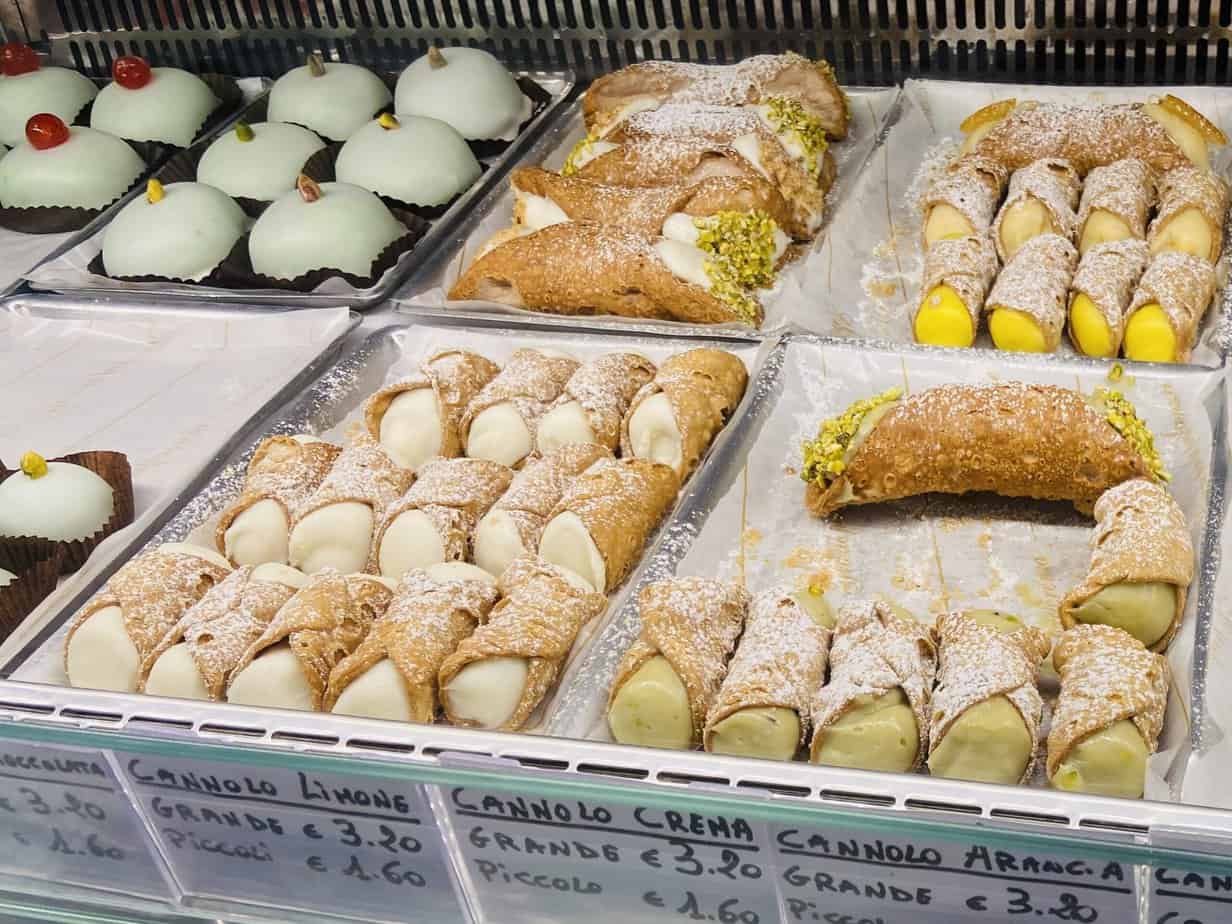
Slice of Sicily
A big misnomer about Rome restaurants is that every menu is the same. Not true. Yes, the classic Roman dishes such as bucatini amatriciana, calcio e pepe and pasta carbonara are on nearly every menu. But there are many eateries featuring different Italian regions.
Sicilian food is wildly popular and plentiful in Rome. Tom took us down Via dell’Arco del Monti to I Dolci di Nonna Vincenza, a relatively modern bakery only 13 years old. This is as authentic Sicilian sweet shops as you’ll get outside Sicily. Big cannolis of chocolate, pistachio, cream and ricotta laid out behind glass. I had a cassatina mignon, a dollop of green frosting filled with ricotta, and a pistachio granita, Sicily’s trademark slushy that is a must on a hot day anywhere in Sicily – or Rome for that matter.
Not far away stood Monte di Pieta, one of the oldest pawn shops in the world. It opened in 1539 on Via dei Coronari before moving to Piazza dei Monte di Pieta where it still operates. During the Renaissance, pawn shops operated as charities and offered loans to the poor with low interest rates.
We entered and it was like being inside a high-end jewelry store. Rome’s poor sure couldn’t afford any of the emerald rings, diamond necklaces we saw behind polished glass. I saw nothing for under €550.
But if you’re in town and interested, they have regularly scheduled auctions.
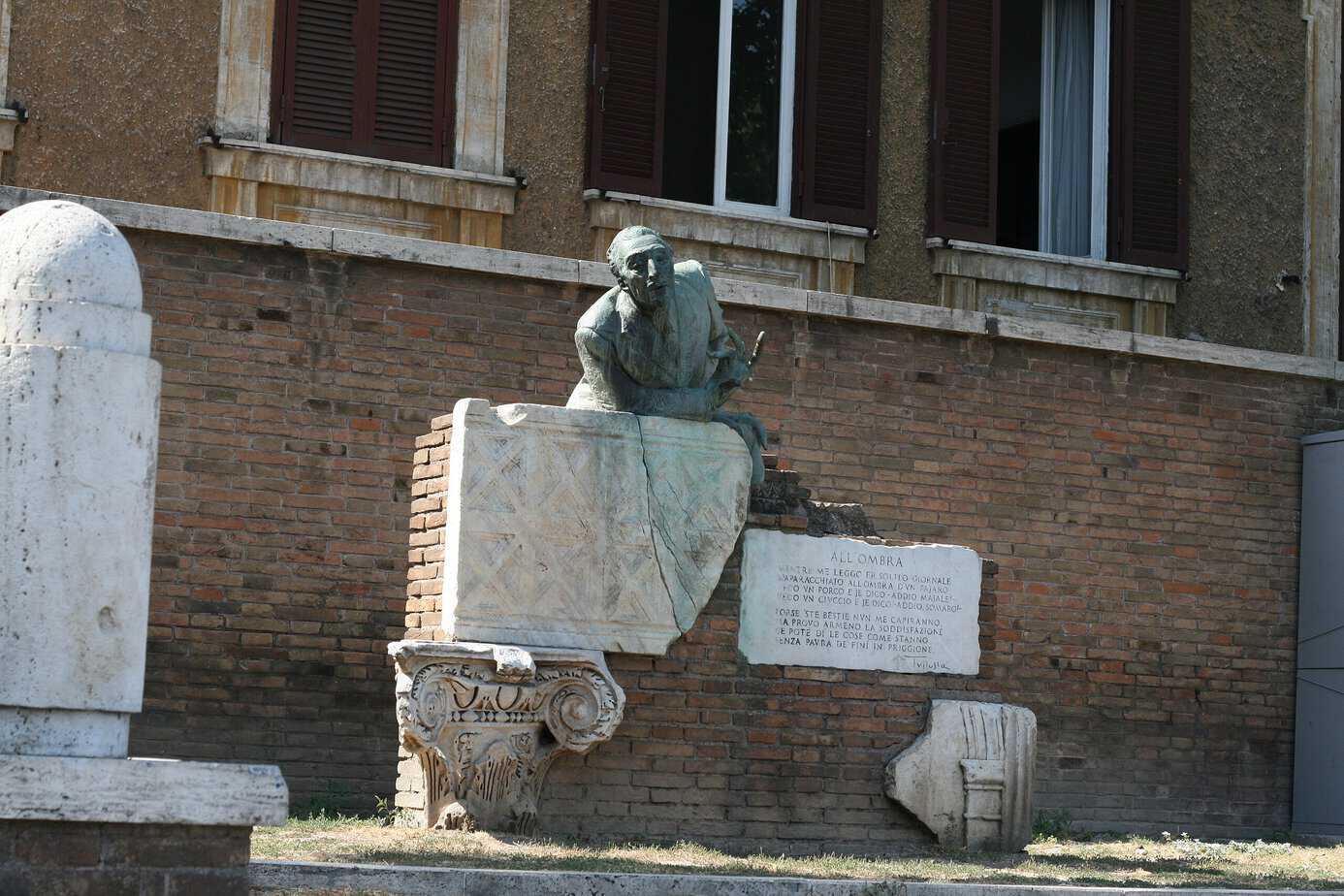
Trastevere
We crossed Ponte Trilussa into Trastevere. This neighborhood has had massive makeovers through the centuries. It has gone from slave quarters during the Roman Republic to a Jewish neighborhood during the Roman Empire to a bohemian hangout in the 1960s to party central and a bit of a tourist trap in the 21st century.
We stopped in Piazza Trilussa, home to the Acqua Paola fountain, built in 1613, where on any given night, particularly in summer, it is packed with youths chatting, flirting and contemplating their evening schedule.
Tom pointed out a statue I had never noticed before in all my times walking through the piazza. Alberto Salustri was a famous Roman poet in the early 1900s who went with the pen name Trilussa. He was staunchly against the fascist movement sweeping across Italy. The fascists told the population, “You are with us or against us.”
In a poem entitled Numbers, he stood his ground and the poem is carved onto a marble slab near his likeness.
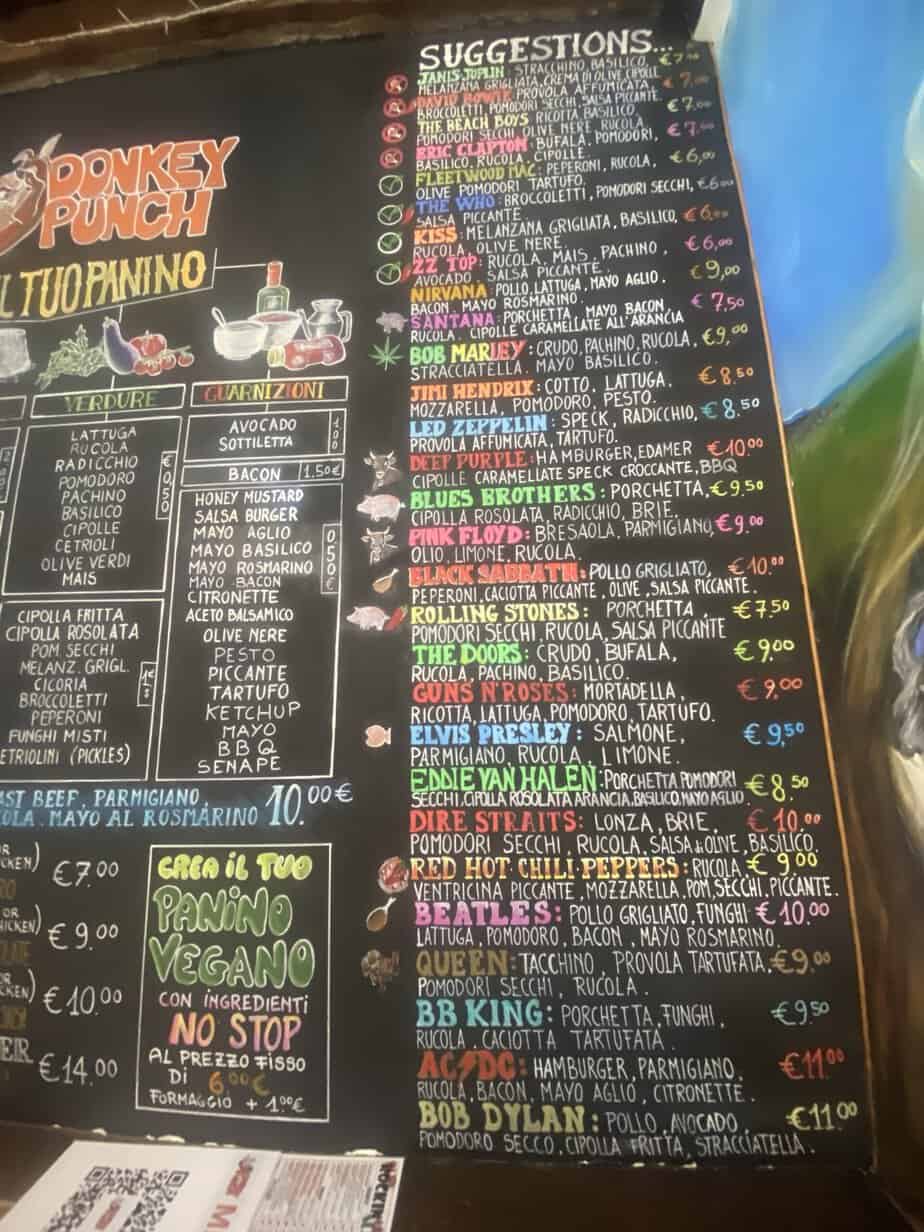
We fell into the Trastevere’s warren of cobblestone alleys and stumbled onto a tiny hole in the wall. Called Donkey Punch, it features the longest list of panini (That’s plural for panino, Americans.) I’ve seen in Italy and I made a mental note to return. It has a definite rock n’ roll theme with each sandwich named for a band. Try a Rolling Stones: porchetta (sizzling suckling pig), pomodori secchi (sun-dried tomatoes), rucola (arugula) and salsa piccante (hot sauce).
All roads in Trastevere tend to end in Piazza Santa Maria Trastevere. Basilica di Santa Maria in Trastevere was founded in the 3rd century on the spot where legend has it a fountain of oil mysteriously sprang from the ground the day Christ was born, Tom explained. It was a sign from above to build a church on that spot.
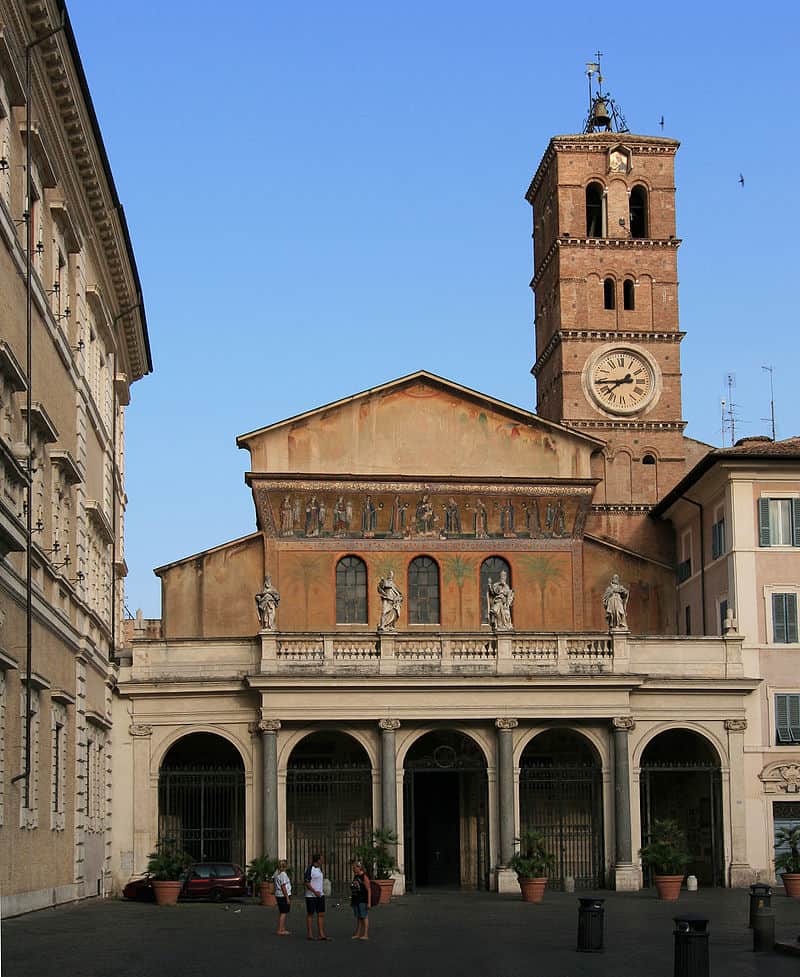
I never explored the church which took its current form in the 12th century. Twenty-one Roman columns, taken from the Terme di Caracalla (the Ancient Roman baths) lead to the altar featuring a dome made up of 12th century mosaics. In the apse, there is a beautiful depiction of saints surrounding Christ and his mother with Pope Innocent II holding a model of the church.
A sign reading FONS OLEI (oil spring), decorated with flowers, marks the spot where the oil surfaced. There is also a Virgin Mary that has been dated betweenthe 6th and 8th centuries to be among the oldest in the world.
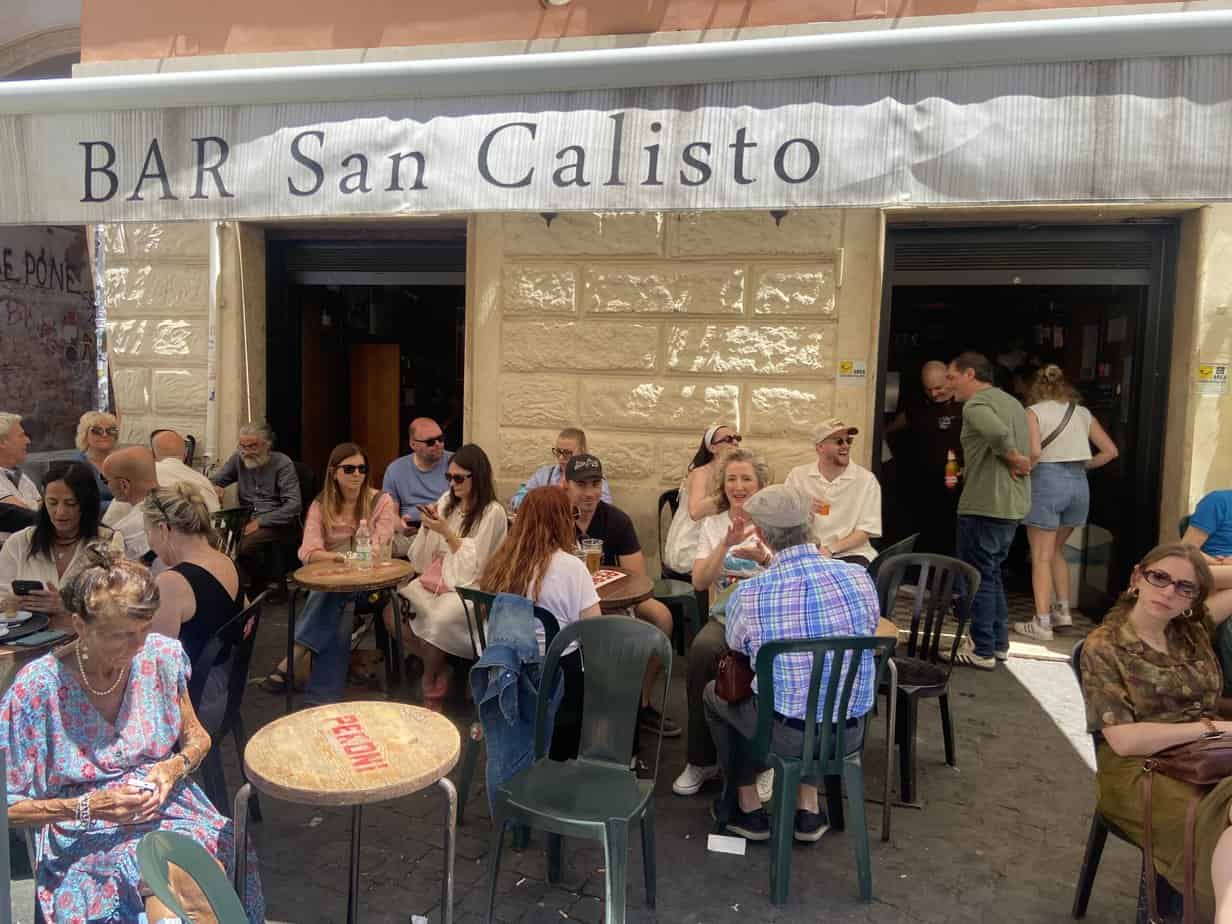
Down the street we stopped at a Trastevere institution. When I backpacked around the world in 1978-79, I had a beer at Bar San Calisto. I think it cost the same as the €2.50 they charge now. Opened in 1969, it was where the artists, communists, writers and revolutionaries hung out. Now it’s where the tourists – and expat locals – go looking for a cheap beer.
We finished at Otaleg, Tom’s favorite gelateria in Trastevere. It’s known for strange flavors such as pineapple with rosemary and avocado with Corsican mint.
Due to the Sobers being 40 minutes late, Tom couldn’t take us to other food spots such as Gusteria Al 17 for the fried pasta or the bufala mozzarella at Antica Caciara, the cheese shop next door. No glass of wine to cap the afternoon, either.
As we polished off our gelatos and said ciao. I walked away knowing why Rome is called The Eternal City. You could live here for an eternity – and I’d like to – and discover new things every day.

